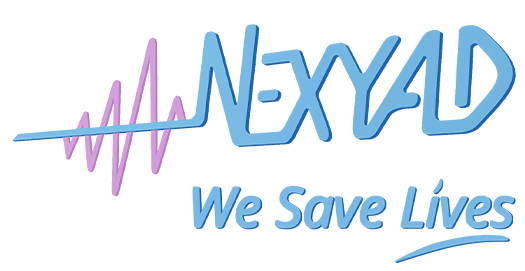The abstract of Dr Grégoire Julien “Functional safety: on-board computing of risk of accident” has been accepted for the 20th International Forum on Advanced Microsystems for Automotive Applications (AMAA 2016) on September 22-23 at Brussel, Belgium, as an oral presentation as well as for publication in the AMAA conference book.

Dr Grégoire Julien
Functional safety: on-board computing of risk of accident
Dr. Grégoire Julien, Pierre Da Silva Dias, Gérard Yahiaoui
Nexyad S.A.
95 Rue Pereire, F-78100 Saint-Germain-en-Laye
Safety estimation is of utmost importance for in the perspective of fully automated vehicles. In particular, recent progress on accident estimation measurement made by insurance companies have revealed that correlation-based considerations do not give satisfaction. Indeed, there is no correlation between accident data bases and data collected by accelerometers such as the so-called “severe braking” that was supposed to estimate anticipation of the driver and ten “risk of accident”. Indeed, statistical correlation cannot explain causality relationship. More recently, it has been demonstrated [1] that accidents are rare events being the consequence of the repetition of “near-misses” accidents: the larger the number of detected “near-misses” accidents, the higher the probability to generate an accident. It has also been shown that it exists causality relationships which fully explain “near-misses” accidents [2].
Based upon results discussed above, we propose a new solution, SafetyNex, taking into account the dynamics of the vehicle and inputs of different nature (visibility, grip, shape of the road, …) to estimate the risk: a dimensionless quantity r∈{0;1} is output: if r=0, the risk does not exist, if r=1, the risk is high and a “near miss” accident is detected. Hence, this solution, based on deep knowledge of causality relationships, can be used for making data-based services richer, for a more relevant estimation of safety level and a better accident anticipation. SafetyNex is then a knowledge-based system using “possibility theory” [3] and its implementation into fuzzy sets theory [4]. With more than 5 000 rules of causality, SafetyNex is the only onboard module that computes a risk that has a meaning for insurers and car manufacturers. SafetyNex has been validated by experts of accidents of French Road Safety Administration [5].
In the perspective of fully automated vehicles, the detection of “near misses” accident can act directly on the decision process for the vehicle control. Furthermore, a “risk profile” as a function of the distance forward the vehicle can be obtained with our solution. It is thus possible to fully anticipate the risk in the future considering the current behavior of the vehicle. However, the main limitation of such an approach lies in the map resolution. Finally, as a further extension of our solution, the risk estimation could be improved by adding camera in order to merge signals obtained from the road/obstacles detection in front of the vehicle with the map matching.
References
[1] Final document of the SARI program by the French research institut IFSTTAR http://sari.ifsttar.fr
[2] Final document of the SARI program by the French research institut CEREMA http://normandie-centre.cerema.fr
[3] « Théorie des possibilités », D. Dubois, H. Prade ; 2006, REE, 8, 42
[4] « Fuzzy Sets as a Basis For Theory of Possibility », A. Zadeh ; 1978, Fuzzy Sets and Systems, 1, 3-28
[5] « Evaluation du risque de sortie de route pour l’aide à la conduite ou le diagnostic d’infrastructure », J. Brunet, P. Da Silva Dias, G. Yahiaoui, Session « caractérisation du risque routier », conférence PRAC 2010, 3-4 Mai 2010.




